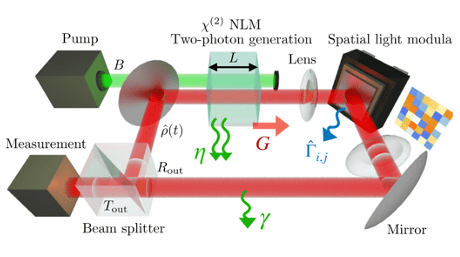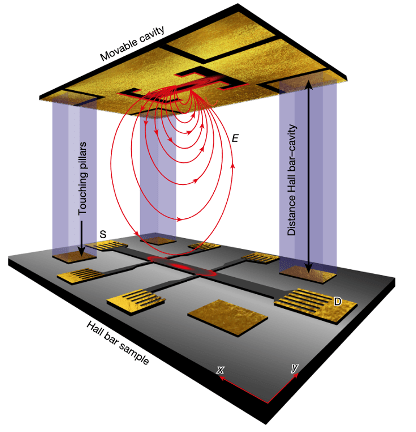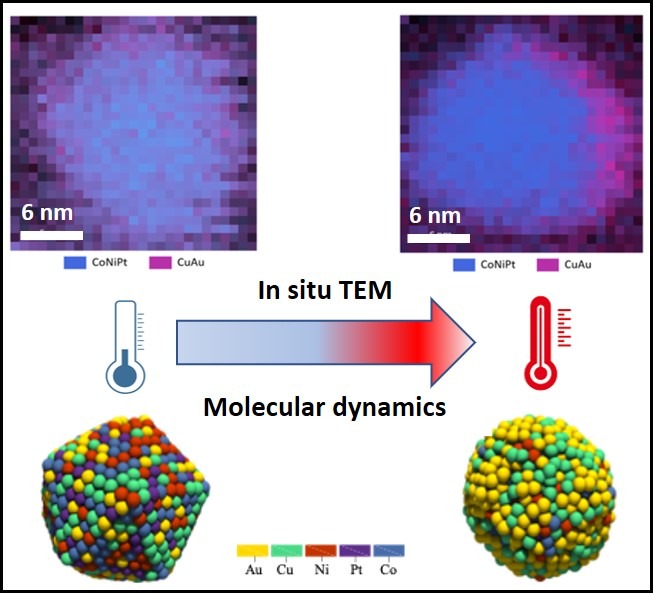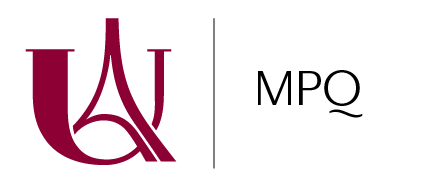The synthesis of nanomaterials by chemical routes has long been developed empirically due to the lack of techniques to probe the dynamics of nano-objects in liquid media. In recent years, so-called “in-situ” approaches have emerged on all the techniques that allow probing matter at the atomic scale, with the aim of rationalizing the synthesis protocols of complex nanostructures. To meet this challenge, it is necessary to reveal their growth mechanisms and identify the action of each species involved in the reaction. However, such a study remains difficult to conduct, on the one hand because each in situ technique presents only partial or indirect information of the synthesis, and on the other hand because a single reagent can play several roles in this process.

Time-resolved STEM images showing the anisotropic growth of silver nanorods on a gold bipyramid. Scale bar is 50 nm.
Contact:
Damien Alloyeau (damien.alloyeau@u-paris.fr)
Reference:
Real-time in situ observations reveal a double role for ascorbic acid in the anisotropic growth of silver on gold, Kinanti Aliyah, Jieli Lyu, Claire Goldmann, Thomas Bizien, Cyrille Hamon, Damien Alloyeau, et Doru Constantin, J. Phys. Chem. Lett. 11, 2830 (2020)
30 (2020)
À lire aussi

Emergent Equilibrium in All-Optical Single Quantum-Trajectory Ising Machines
A collaboration between the Theory group at MPQ, CREF Rome, and Sapienza University of Rome has shown that multimode all-optical systems driven by two-photon processes can reach thermal equilibrium at the level of single quantum trajectories. The study is published in...

Cavity-enhanced fractional quantum Hall phases and cavity-modified spin splittings
A collaboration between the Equipe Théorie at MPQ and scientists from ETH Zurich and the Flatiron Institute has demonstrated, both theoretically and experimentally, that giant vacuum fields confined in a split-ring resonator cavity can profoundly alter...

Unravelling the nonlinear generation of designer vortices with dielectric metasurfaces
Researchers from the DON team have demonstrated and analyzed the generation of high-purity second-harmonic vortices with dielectric metasurfaces. These results are published in Light: Science and Applications. Vortex beams are currently drawing a great deal of...

Thermal stability of high-entropy nanoalloys: reality or chimera?
By studying at the atomic scale the thermal behavior of nanoparticles composed of gold, cobalt, copper, nickel and platinum, scientists have revealed that the stability of these so-called high-entropy nanoalloys is much lower than expected, as gold and copper...
